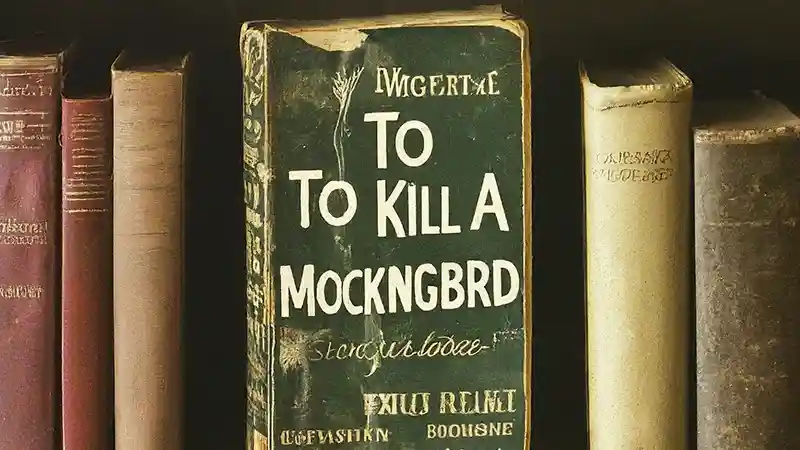Teaching for almost two decades brings a lot of changes and reflections. Some things get better, some… not as much. Like many teachers, I’ve been shifting towards a differentiated approach over the past few years. The traditional skill-and-drill had its place, but I felt like something was missing – a way to make deeper connections for all my students.
Results from An Old Novel, a New Approach
While I’ve reworked a lot of my material, it took me until two years ago to revamp my “To Kill a Mockingbird” unit. This book is a staple at our school, and the department insists we keep it as part of our ninth-grade curriculum. But honestly, the students seemed bored. I started to wonder: could I keep the book, and still get them engaged and succeeding at a higher level by using Universal Design for Learning (UDL)? My plan was to create a bunch of different activities that matched different learning styles and let students have more choice in how they connected with the story. The big goals were to ramp up engagement, spark those meaningful connections, and hopefully, see it reflected in their grades. Link to Full Differentiated To Kill a Mockingbird Unit Plan Here.
What Did the Differentiated Unit Look Like?

It was important to me to stick to some core UDL principles. Most lessons tried to include an analytical, kinesthetic, and artistic learning option. There’s still a bit of work to be done, but I’m happy with the choices now available.
- Analytical Options: For the deep thinkers, I built in activities that let them explore the big themes and how the story works on a deeper level. This could be researching the historical context, writing responses, or debating their ideas in a group setting. These are probably my academic-bound kids, and they need to sharpen those skills.
- Artistic Choices: Some students just express themselves best creatively. For them, the options might be making advertisements, sketching characters, redesigning the book cover, or even writing poetry connected to the themes. One of my favorite projects involved storyboarding the courtroom scene – they truly brought the tension and key moments of Tom Robinson’s trial to life!
- Kinesthetic Activities: I wanted hands-on experiences for those tactile learners. So, for example, a popular pre-reading activity was building a visual timeline of the Civil Rights Movement. Getting to cut and paste really brings events to life and helps them see how To Kill a Mockingbird fits into that bigger picture.
Why Make the Change?
There were two main reasons behind all this: I wanted to see a jump in student engagement, and I wanted a classroom where every student got to connect with the material in a way that felt right for them. I hoped this would lead to better academic success along the way.
Assessments and Student Performance
The old way of figuring out if students “got it” was simple. Chapter questions, quizzes scattered throughout… it showed their basic knowledge of the book, but I’m not sure how much it captured what they truly learned. And it definitely didn’t inspire much excitement.
This differentiated unit swapped out those quizzes for tasks that needed the same knowledge but with a creative spin. Want to show you understand the quotes from chapter two? Build a social media ad campaign around them! More of a traditional learner? Do the quote analysis – that’s still an option.
Engagement levels skyrocketed! The discussions were just different – so much richer. But, it also brought challenges. Some students thrived and produced incredible work. Others, though… well, without that structure, they floundered. In short, not everyone turned in their work. So, while I didn’t see that big jump in overall class marks, the quality of understanding seemed much higher for those who fully took part.
The biggest hurdle was definitely getting all the assignments done. This is something I’m still working on – how to keep everyone consistently motivated without those constant quizzes.
What Did My Students Think?
This was the part that shocked me. A bunch of kids said they enjoyed the book, some who usually seemed indifferent to their schoolwork. Now, some definitely still did the work, they just didn’t turn it in. One student told me that it was the courtroom scene storyboard that made them truly get Tom Robinson, and they even empathized with the character. That tells me the creative options were sparking something deeper.
Some of the projects blew me away, like a group that made a movie trailer for To Kill a Mockingbird. Their level of analysis wouldn’t have come from a traditional test!
My Takeaways on the To Kill a Mockingbird Differentiated Unit

It’s been a wild ride! Honestly, I like this differentiated approach even though the traditional quizzes might give a clearer picture of pure knowledge. This new way gets students connecting with the book on their own terms.
I’ll be digging in more to make sure the activity choices truly reflect different learning styles and that there’s a solid base of knowledge everyone gets no matter their path through the novel.
The End Goal
Differentiated units are definitely a lot of work, but I enjoyed the process of rebuilding this unit. Dealing with tough novels as part of a mandated curriculum is a reality for many of us. It matters to me that all my learners feel respected as we work through them. Sure, UDL leads to better student engagement and deeper understanding. Maybe it doesn’t give the tidy results of a quiz…yet. But my real goal is to spark a lifelong love of learning and critical thinking. That’s a win I’ll take any day.


